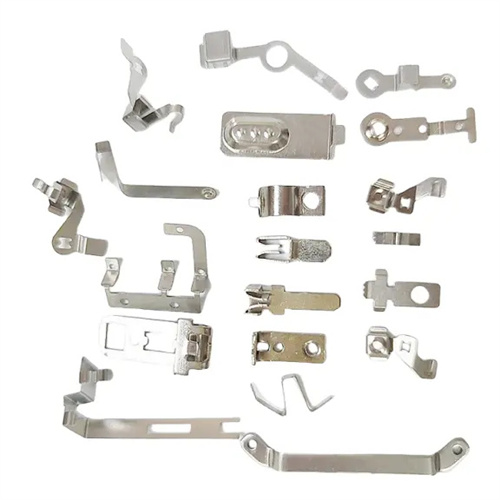Magnesium and magnesium alloy sheets and strips
Magnesium and magnesium alloy sheets and strips are made from pure magnesium or magnesium alloys through rolling and other processes. Their low density (approximately 1.74 g/cm³), high specific strength, and excellent processability have made them highly sought after in the aerospace, automotive, and telecommunications sectors. Compared to aluminum alloy sheets and strips, magnesium and magnesium alloy sheets and strips offer significantly greater weight reduction, reducing weight by approximately 30% for the same volume, making them a key material for lightweight design. Pure magnesium sheets and strips offer excellent thermal and electrical conductivity but suffer from lower strength. Magnesium alloy sheets and strips (such as the AZ31, AZ61, and ZK60 series) utilize alloying elements such as aluminum, zinc, and zirconium to significantly enhance strength and corrosion resistance while maintaining lightweight, meeting the structural requirements of diverse applications.

The production process for magnesium and magnesium alloy sheets and strips is complex, requiring overcoming the technical challenges of magnesium alloys’ low room-temperature ductility and susceptibility to oxidation. The production process primarily involves melting and casting ingots, hot rolling, cold rolling, and annealing. First, magnesium ingots and alloying elements are melted in appropriate proportions, with the melting temperature (approximately 700-750°C) and protective atmosphere (typically a mixture of SF6 and nitrogen to prevent oxidation) strictly controlled. After being cast into ingots, they undergo homogenization annealing (350-450°C) to eliminate casting stresses and compositional segregation. During the hot rolling stage, the ingots are heated to 300-400°C and reduced to a thickness of 3-10mm through multiple rolling passes. During the rolling process, the reduction and rolling speed must be controlled to avoid cracking. Cold rolling, performed at room temperature or warm, further reduces the thickness to 0.3-3mm, improving dimensional accuracy and surface quality. Annealing is performed in between to eliminate work hardening. After straightening and slitting, the finished strips are surface treated as required (such as anodizing and spraying), and finally undergo mechanical property testing and dimensional inspection to ensure quality.

In the aerospace sector, magnesium and magnesium alloy plates and strips are key materials for achieving lightweight structures. Aircraft fuselage skins, wing ribs, and other components utilize AZ61 magnesium alloy plates, significantly reducing fuselage weight while ensuring structural strength and improving fuel efficiency. Spacecraft solar panel substrates utilize ZK60 magnesium alloy strips, whose excellent fatigue resistance allows them to withstand the temperature fluctuations experienced in space, and their lightweight properties help reduce launch costs. Furthermore, missile body structures utilize high-strength magnesium alloy plates, which reduce weight while meeting aerodynamic requirements, improving range and maneuverability. A certain type of military transport aircraft achieved a weight reduction of approximately 8% and a significant increase in range by replacing some aluminum alloy components with magnesium alloy plates and strips.

Demand for magnesium and magnesium alloy sheets and strips continues to expand in the automotive and electronics sectors. The battery casings of new energy vehicles utilize AZ31 magnesium alloy sheet. Its excellent thermal conductivity helps dissipate heat from the battery, while its shielding properties reduce electromagnetic interference. Its lightweight design also extends driving range. Components such as dashboard brackets and door inner panels in conventional vehicles are stamped from magnesium alloy strips, reducing weight by over 40% compared to steel components and improving vehicle handling. In electronic devices, laptop casings utilize 0.5-1mm thick magnesium alloy sheet, produced through stamping and CNC machining to create a thin-walled structure that is both lightweight and portable while providing excellent impact protection. A well-known brand’s notebook uses a magnesium alloy casing to keep the overall weight under 1kg.

With the development of lightweighting technology, the application areas of magnesium and magnesium alloy sheets and strips continue to expand, and their performance continues to be optimized. By developing superplastic magnesium alloy sheets, manufacturers can achieve one-step forming of complex shapes to meet the manufacturing needs of automotive panels. They also develop corrosion-resistant coating technology to address the pain point of magnesium alloys’ susceptibility to corrosion, enabling their use in humid environments. In terms of sustainable development, the recycling rate of magnesium alloy sheets and strips is as high as over 95%, meeting the circular economy requirements of the automotive industry. In the future, with the miniaturization trend in industries such as 3C products and drones, the demand for ultra-thin magnesium alloy strips (thickness less than 0.1mm) will grow rapidly, driving the development of magnesium alloy sheets and strips towards high precision and multi-functionality, and the market prospects are broad.
